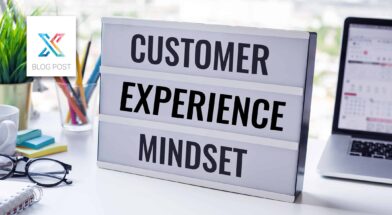Every AEC firm aims to establish and nurture strong client relationships, with many prioritizing the delivery of a best-in-class client experience as a key strategic goal. An ongoing client feedback program (often referred to as AEC client research, client listening or Voice of the Client) is one of the most effective ways to quantifiably assess and enhance these relationships. Despite the recognized value of such programs, only a minority of firms in the industry have formal systems in place to consistently gather client feedback. Although client feedback holds immense potential for improving client experiences, many AEC firms hesitate to implement these programs due to prevalent misconceptions. These “myths” continue to hinder the adoption of client feedback initiatives, which are widely regarded as essential for firms truly committed to client-centricity and client experience.
In this article, we will explore and debunk 11 common myths that often prevent AEC firms from implementing ongoing client feedback. Whether you’re trying to persuade a skeptical leadership team or addressing your own doubts, we’ll offer insights to help reshape your understanding of client feedback and its role in creating a more client-centric firm.
Myth #1: “We Already Know What Our Clients Think.”
If there is one pervasive myth that firm leaders believe about the need (or the lack thereof) for AEC client research, it’s this myth. So many in leadership are convinced that they already have a comprehensive understanding of their clients' perceptions, experiences, and needs. Many assume that regular interactions and project-related conversations are enough to keep them attuned to client sentiment. However, research reveals that nearly one in four clients harbor unvoiced complaints—issues they haven’t shared but which still impact their perception of the firm. Additionally, these conversations often occur with only a single point of contact, rather than all stakeholders, leaving gaps in understanding broader client expectations.
Client expectations are constantly evolving, and without consistent, structured feedback from all involved parties, it’s impossible to maintain a complete and current view of client perceptions. Regular feedback provides a dynamic, real-time perspective that assumptions and past experiences simply cannot capture on their own.
Myth #2: “We’ve Worked with Our Clients for Years; We Know Them Well.”
Long-standing client relationships often foster a sense of comfort and familiarity, leading AEC firms to believe they fully understand their clients. However, familiarity alone doesn’t necessarily equate to true insight. Over time, even healthy relationships can develop blind spots, as clients may have concerns or feedback they are hesitant to voice directly. Often, clients refrain from bringing up issues, either to avoid confrontation or because they believe the issue isn’t significant enough to discuss. Relying solely on the history of a relationship can create these blind spots that compromise the client experience and client perception over time. Giving long-term clients a way to share challenging feedback in a safe, non-threatening environment demonstrates your commitment to continuous improvement. This approach not only reveals issues you may not have been aware of but can also uncover new opportunities for growth and innovation.
Myth #3: “Our High Percentage of Repeat Business Tells Us What We Need to Know.”
Repeat business is certainly a positive indicator, but it doesn’t tell the whole story. In what we refer to as being the “gas station on the right,” clients might continue working with a firm simply out of convenience or habit, despite having unresolved frustrations. Repeat business alone doesn’t necessarily reflect true loyalty; metrics like share of wallet are more accurate indicators of client commitment. Relying solely on high repeat rates to gauge client sentiment can mask underlying issues, which, if left unaddressed, may lead to decreased loyalty or unexpected client churn. By gathering ongoing feedback, firms can identify and address these issues early, proactively enhancing the client experience and deepening loyalty.
Myth #4: “Our Clients Will Tell Us if There’s a Problem.”
While it is reasonable to assume that clients will voice concerns voluntarily, many are reluctant to bring up issues on their own. Remember, research shows that one in four clients have an unvoiced complaint. They may fear confrontation, worry about straining the relationship, or simply feel that their concerns won’t be heard. Or worse yet, you haven’t provided a process for them to regularly share feedback in the first place. Why wait for the client to come to you with a problem? Proactively seeking feedback opens a safe channel for clients to share their thoughts, leading to a better understanding of potential issues before they escalate.
Myth #5: “We Did a Survey a Few Years Ago and It Wasn’t Successful.”
Limiting client feedback to surveys or perception studies conducted only every few years hinders your ability to keep up with the constantly evolving perceptions, expectations, and needs of your clients. Additionally, past attempts to gather client feedback may not fully reflect the potential value of these insights and shouldn’t discourage firms from trying again. Effective client research requires best practices, including clear communication, choosing the right tools, asking insightful questions, and following up appropriately. Today’s methods for collecting and analyzing feedback have evolved significantly, with industry-specific software tools that streamline the process and provide deeper insights. Even if previous efforts were unsuccessful, using the right tools and strategies can lead to more meaningful and actionable results.
Myth #6: “Negative Feedback Will Harm Our Reputation.”
Many AEC firms worry that soliciting client feedback will reveal negative perceptions that could harm their reputation. However, the reality is that your clients already hold perceptions—whether positive, neutral, or negative—whether you ask for them or not. Wouldn’t it be better to know what those perceptions are so you can address them proactively? Uncovering challenging feedback gives you a chance to show clients that you are committed to elevating their experience. Responding to feedback with thoughtful actions demonstrates transparency, accountability, and a genuine commitment to improvement—qualities that define a client-centric approach. In fact, addressing negative feedback effectively can actually boost client loyalty over time and improve your firm’s reputation rather than harm it.
Myth #7: “Only Unhappy Clients Provide Feedback.”
Another common misconception is that only unhappy clients provide feedback, leading firms to expect mostly negative responses. However, your firm’s raving fans often enjoy sharing their positive experiences and may also offer constructive criticism because they genuinely want to see the firm succeed. Unfortunately, many firms overlook the opportunity to use feedback to identify their Net Promoters—clients who are highly likely to recommend the firm to others. These loyal clients can present valuable cross-selling and referral opportunities. The point is that while unhappy clients are likely to share their perspectives (and you should welcome this), you’ll also gain valuable insights from your biggest advocates and everyone in between. By actively inviting feedback from all clients, firms gain insights from those whose expectations are being met and from those who see areas for improvement. This inclusive approach fosters trust, as clients feel their opinions are valued and see that the firm is dedicated to truly understanding their perspectives.
Myth #8: “Feedback Won’t Lead to Actionable Change.”
Some firms dismiss client feedback as irrelevant, assuming it won’t lead to actionable changes. However, a well-structured feedback program can uncover specific areas for improvement. Engaging with frustrated clients provides a chance to understand their needs, create an action plan, and strengthen the relationship. For clients who are satisfied but not yet ‘raving fans,’ it’s an opportunity to discover their ideal expectations and adjust services accordingly, potentially deepening loyalty. Additionally, positive feedback from your top advocates reveals strengths that can be leveraged across other accounts and provides marketing insights, helping to attract new clients and encourage referrals. By actively listening to clients, firms can transform feedback into concrete actions that enhance client satisfaction and experience.
Myth #9: “It’s Too Time-Consuming and Costly.”
Collecting ongoing client feedback can seem like a significant investment in time and resources, especially when using homegrown methods such as physical surveys, face-to-face interviews, or manual processes with generic survey tools. These methods can be time-consuming and costly. However, a modern CX platform streamlines the process, making it more efficient and cost-effective. While a feedback platform requires an investment, it allows firms to gather valuable insights with minimal disruption, reducing the overall burden on internal teams while enhancing measurement and insights.
Sending out surveys might be easy, but the right surveys—targeted, timely, and strategic—enable clients to feel heard and empower teams to act with real, tailored guidance. The long-term benefits of leveraging a well-designed feedback system far outweigh the initial costs. Many clients have reported saving million-dollar accounts with a single, well-executed survey, highlighting the priceless value of meaningful client feedback. Ultimately, investing in a client feedback platform leads to better client relationships and higher retention, paying off substantially over time.
Myth #10: “Clients Are Not Interested in Participating.”
Some firms assume that clients are too busy or uninterested in providing feedback. While clients often have demanding schedules, many value the chance to share their opinions, particularly when they know it could lead to improvements. By offering quick and accessible feedback options, like brief surveys, firms can make participation less time-consuming and more appealing.
Highlighting how client feedback directly shapes the client experience helps clients see themselves as valuable partners in the process. Providing multiple feedback opportunities throughout the project will boost participation and deepen engagement. When clients realize their input is integral to service excellence, they’re more likely to view the feedback process as a meaningful opportunity rather than a burden.
Myth #11: “Most of Our Clients Think Our Fees Are Too High.”
Concerns about pricing often prevent firms from seeking client feedback, yet these fears are generally misplaced. While our research shows that less than 5% of clients believe fees are too high, nearly 60% actually feel they receive far more value than they pay for—though they rarely share this unless asked. The majority, 54%, are more concerned with capital costs than design fees, but many firms still let this small vocal minority dictate pricing across the board. Instead of allowing these few voices to lower rates universally, firms should use feedback to refine pricing: charging a premium where value is recognized, maintaining market rates where there’s room for growth, and focusing on value creation for clients who perceive fees as high. By understanding clients' true perspectives, firms can align pricing strategies with both client expectations and their own value proposition.
The Value of Embracing Client Feedback
Collecting and acting on client feedback offers multiple benefits for AEC firms, including stronger relationships, increased loyalty, and a competitive edge. While these myths may create hesitation, embracing feedback is essential to better understanding clients and elevating the client experience. By addressing these misconceptions, AEC firms can begin to view feedback not as a task, but as an invaluable tool for growth and improvement. Embracing client feedback isn’t just about solving problems; it’s about building lasting relationships and driving sustained success.





